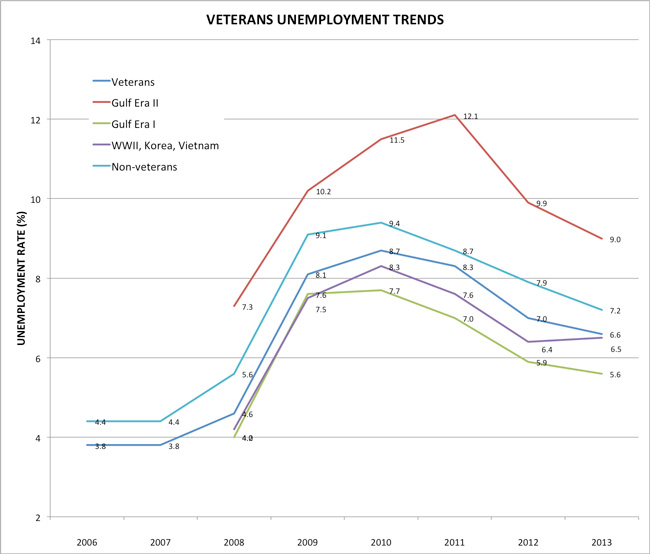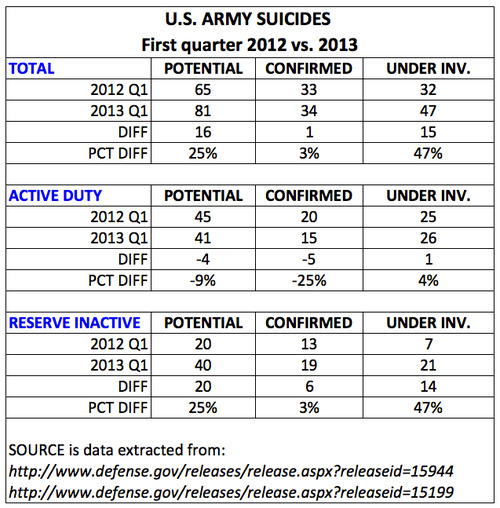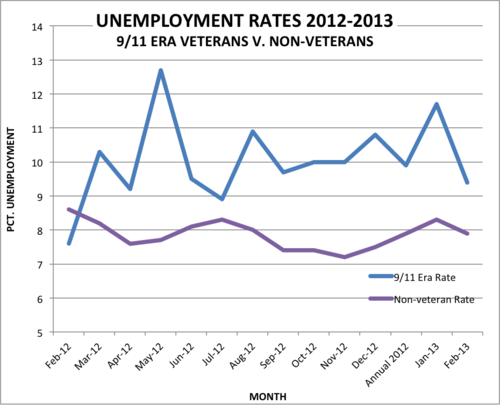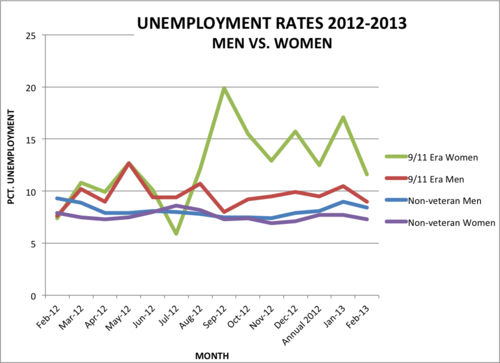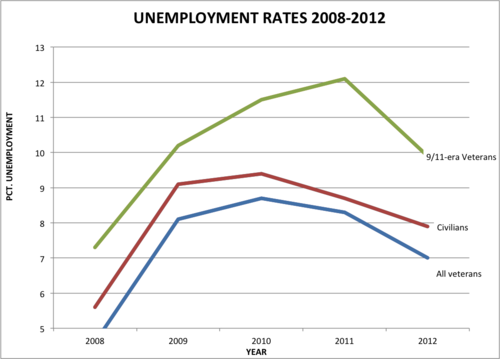After essentially stagnating during 2013, the unemployment rate among the group of veterans who have served since 9/11 declined significantly in the first half of this year, an analysis of data from the Bureau of Labor Statistics shows.
On average from January through June, the unemployment rate among so-called “Gulf War Era II” veterans was 7.8% — a 25% drop from the 9% rate for 2013. The unemployment rate during the second quarter of this year averaged 6.4% compared to 8% in the first quarter, indicating continued positive progress as the year unfolds.
By comparison, the rate for non-veterans in the first half of this year averaged 6.4%.
An average of 175,000 post-9/11 veterans was out of work each month for the first six months of this year.
The Gulf War II veteran jobless rate remains significantly higher than the veteran population as a whole — 27% above the average 5.7% rate for all veterans in the first six months. That is a tiny bit improved over last year, when the overall 9% rate for Gulf War II veterans was just over one-third higher.





